Identec Solutions ICARD-NA RF ID PC Card User Manual i CARD User s Guide
Identec Solutions, Inc. RF ID PC Card i CARD User s Guide
Contents
- 1. manual
- 2. users manual revised
users manual revised
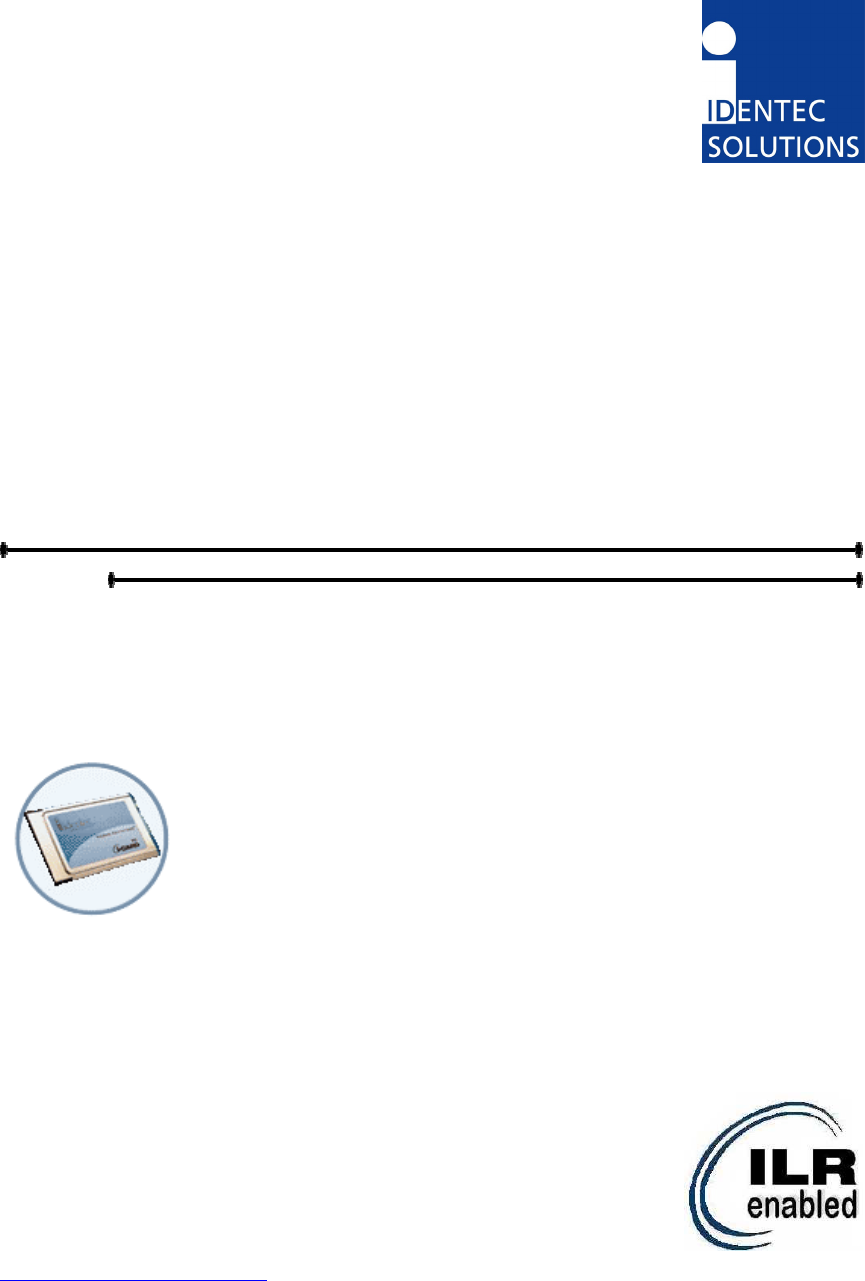
PC i-CARD User’s Guide
March 1, 2002
IDENTEC SOLUTIONS, Inc.
Suite 102, 1860 Dayton Street
Kelowna, British Columbia
Canada V1Y 7W6
Tel: (250) 860-6567
Fax: (250) 860-6541
www.identecsolutions.com
_____________________________________________________________________________________
Document # 7007-0001, Rev B - ii –
Proprietary Notice
This document contains confidential information proprietary to IDENTEC SOLUTIONS,
Inc. and may not be used or disclosed to other parties in whole or in part without prior
written authorization from IDENTEC SOLUTIONS, Inc.
Disclaimer and Limitation of Liability
IDENTEC SOLUTIONS, Inc. and its affiliates, subsidiaries, officers, directors, employees
and agents provide the information contained in this Manual on an “as-is” basis and do
not make any express or implied warranties or representations with respect to such
information including, without limitation, warranties as to non-infringement, reliability,
fitness for a particular purpose, usefulness, completeness, accuracy or currentness.
IDENTEC SOLUTIONS, Inc. shall not in any circumstances be liable to any person for any
special, incidental, indirect or consequential damages, including without limitation,
damages resulting from use of or reliance on information presented herein, or loss of
profits or revenues or costs of replacement goods, even if informed in advance of the
possibility of such damages.
Trademarks
“IDENTEC SOLUTIONS”, “Intelligent Long Range”, “ILR” and the stylized “i” are
registered trademarks and “i-Q”, “i-D”, “i-CARD”, “i-PORT”, “i-LINKS”, “Solutions. It’s in
our name.” are trademarks of IDENTEC SOLUTIONS, Inc. and/or IDENTEC SOLUTIONS
AG.
Copyright Notice
Copyright © 2002 IDENTEC SOLUTIONS, Inc. All rights reserved.
No part of this document may be reproduced or transmitted in any form by any means,
photographic, electronic, mechanical or otherwise, or used in any information storage
and retrieval system, without the prior written permission of IDENTEC SOLUTIONS, Inc.

_____________________________________________________________________________________
Document # 7007-0001, Rev B - iii –
Radio Frequency Compliance Statement
IDENTEC SOLUTIONS, Inc. is the responsible party for the compliance of the following
devices:
MODEL: i-PORT i-CARD i-Qxx TAGS
FCC ID: O2E-ILR-IPORT O2E-ICARD-NA OO4-ILR-IQ8T or
OO4-ILR-IQR
CANADA: 35381032062A 35381032231 35381021756A or
35381021825
EUROPE: CE 0678(!) CE 0678(!) CE 0682(!)
TYPE: II/S N/A SL/xx
The user(s) of these products are cautioned to only use accessories and peripherals
approved, in advance, by IDENTEC SOLUTIONS, Inc. The use of accessories and peripherals,
other than those approved by IDENTEC SOLUTIONS, Inc., or unauthorized changes to
approved products, may void the compliance of these products and may result in the loss of
the user(s) authority to operate the equipment.
Operation is subject to the following conditions: (1) these devices may not cause harmful
interference, and (2) these devices must accept any interference, including interference that
may cause undesired operation of the device.
FCC Compliance
This equipment has been tested and found to comply with the limits for a Class A digital
device, pursuant to Part 15 of the FCC Rules. These limits are designed to provide reasonable
protection against harmful interference when the equipment is operated in a commercial
environment. This equipment generates, uses, and can radiate radio frequency energy and, if
not installed and used in accordance with the instruction manual, may cause harmful
interference to radio communication. Operation of this equipment in a residential area is
likely to cause harmful interference in which case the user will be required to correct the
interference at his/her own expense.
Warning: Changes or modifications to this unit not expressly approved by the party
responsible for compliance could void the user’s authority to operate the equipment.
Industry Canada Compliance
This Class A digital apparatus meets all requirements of the Canadian Interference-Causing
Equipment Regulations.
Cet appareil numérique de la classe A respecte toutes les exigences du Règlement sur le
matériel brouilleur du Canada.
To reduce potential radio interference to other users, the antenna type and its gain should be
so chosen that the equivalent isotropically radiated power (EIRP) is not more than that
required for successful communication.
The installer of this radio equipment must ensure that the antenna is located or pointed such
that it does not emit RF field in excess of Health Canada limits for the general population;
consult Safety Code 6, obtainable from Health Canada.
_____________________________________________________________________________________
Document # 7007-0001, Rev B - iv –
Table of Contents
1.0 Purpose________________________________________________ 5
2.0 Overview_______________________________________________ 5
2.1 Functionality_________________________________________________________________ 5
2.2 Components _________________________________________________________________ 5
3.0 Installation _____________________________________________ 6
3.1 Hardware ___________________________________________________________________ 6
3.2 Software ____________________________________________________________________ 6
3.2.1 Windows 2000 ____________________________________________________________ 7
3.2.2 Windows 98/ME __________________________________________________________ 8
3.2.3 Windows NT _____________________________________________________________ 9
3.2.4 Windows CE ____________________________________________________________ 10
4.0 Usage_________________________________________________ 11
Appendix A: Technical Specifications __________________________ 12
Appendix B: RF Output Power Calculation _____________________ 14

i-CARD User’s Guide
_____________________________________________________________________________________
Document # 7007-0001, Rev B - 5 –
1.0 Purpose
This guide explains how to install and operate the PC version of the i-CARD when using a
laptop or desktop computer.
2.0 Overview
2.1 Functionality
The i-CARD is IDENTEC SOLUTIONS’ Intelligent Long Range (ILR®) radio frequency
mobile interrogator in a type II PC Card format. The PC i-CARD is easily integrated into
portable or laptop computers and is used in conjunction with i-LINKS (or other ILR®
software) to read and write data to tags. The flexibility of an interrogator on a PC Card
allows for easy integration of ILR® into enterprise systems and permits combination
with other technologies such as bar code and wireless LAN.
Computers with a PC i-CARD can communicate to tags at a distance of up to 10 meters
(33 feet). The i-CARD communicates with the entire i-Q active tag product line including
i-Q8, i-Q8T, i-Q32, and i-Q32T tags. The current version of the PC i-CARD is not
compatible with the i-D tag product line.
The PC i-CARD is available in 916 MHz or 868 MHz to communicate in a global market.
The signal propagation characteristics of the UHF radio band used by ILR® technology
provide long-range communication and high-speed transmission rates for reliable data
exchange.
The installation and usage instructions for the PC i-CARD are identical for both the
916 MHz and 868 MHz frequencies.
2.2 Components
The i-CARD resembles a standard PC card with one addition: an external antenna. On
the exposed end of the i-CARD, there are an MMCX antenna connector, a 15-pin serial
connector (not used in the PC version of the i-CARD) and 3 status LEDs indicating
Transmit, Receive and RF Carrier Detect. These LEDs are operational after appropriate
ILR® software is installed (i.e. i-LINKS).
Figure 1: i-CARD Components
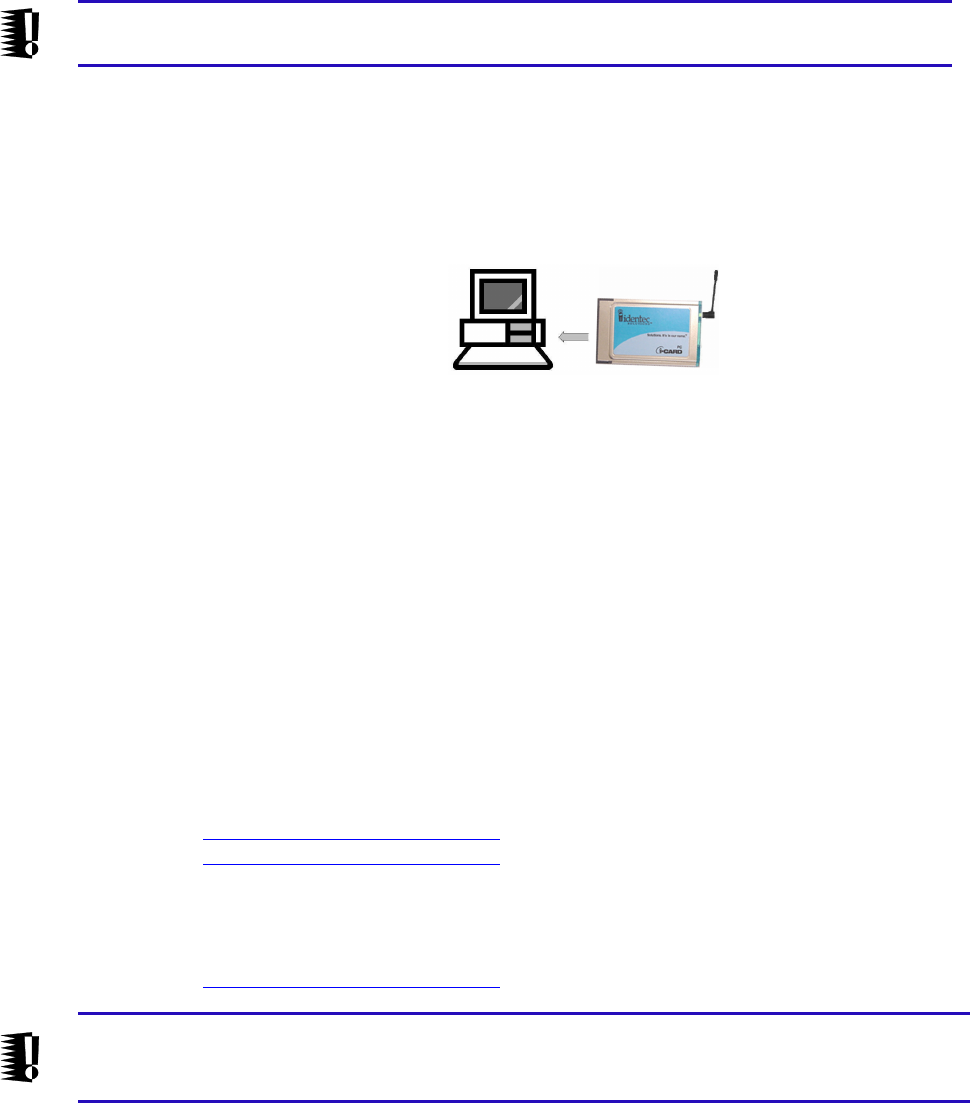
i-CARD User’s Guide
_____________________________________________________________________________________
Document # 7007-0001, Rev B - 6 –
3.0 Installation
The PC i-CARD is easy to install—simply attach the antenna, insert the i-CARD into the
desired computer and install the necessary hardware driver for the specific operating
system. The following sections describe each of these steps in detail.
Note: The hardware driver only needs to be installed the first time an i-CARD is
inserted into a computer or when performing an upgrade to the driver.
3.1 Hardware
To install the external antenna, grasp its base and insert it into the antenna connector
until it locks into place.
Figure 2: Antenna Installation
To remove the antenna, grasp the base firmly and remove carefully to avoid damage.
3.2 Software
The computer being used for i-CARD operations must be running one of the following
operating systems: Windows NT/98/ME/2000/CE.
To install the i-CARD, perform the following steps:
1. Insert the
ILR® Installation Disk (either floppy disk or CD) into the computer
that will operate the i-CARD.
2. Insert the i-CARD into the PC card slot of the desktop or laptop computer.
An installation wizard will start immediately after the i-CARD is inserted.
3. Complete the wizard instructions and refer to the following sections for additional
instructions specific to each operating system:
For O/S: Go to section:
2000 3.2.1
98 3.2.2
ME 3.2.2
NT 3.2.3
CE 3.2.4
Note: A readme.txt file is available for each operating system on the ILR®
Installation Disk and contains the same instructions that are described in the
following sections.
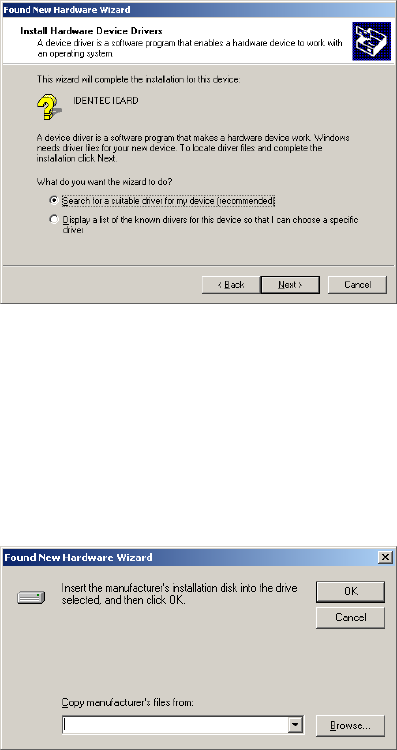
i-CARD User’s Guide
_____________________________________________________________________________________
Document # 7007-0001, Rev B - 7 –
3.2.1 Windows 2000
The following section describes how to install the device driver on Windows 2000.
When the i-CARD is inserted into the PC slot, an installation wizard begins
automatically and the following screen appears:
Select the Search for a suitable driver for my device option and click Next.
Selecting a search location depends on the type of ILR® Installation Disk you
received. If you received a floppy disk, the search location is the A: drive. If you
received a CD, the search location is the D: drive.
For a search location, select the Floppy Disk Drives option, and click Next. Click the
Browse button to copy drivers from your ILR® Installation Disk:
Using the Browse dialog box, select the \drivers\Windows 2000 folder. Select the
i-CARD.inf file, then click OK.
The hardware driver is loaded and a confirmation screen appears. This screen
verifies that the installation has completed successfully. Click Next to complete the
installation.
The hardware driver installation is now complete.
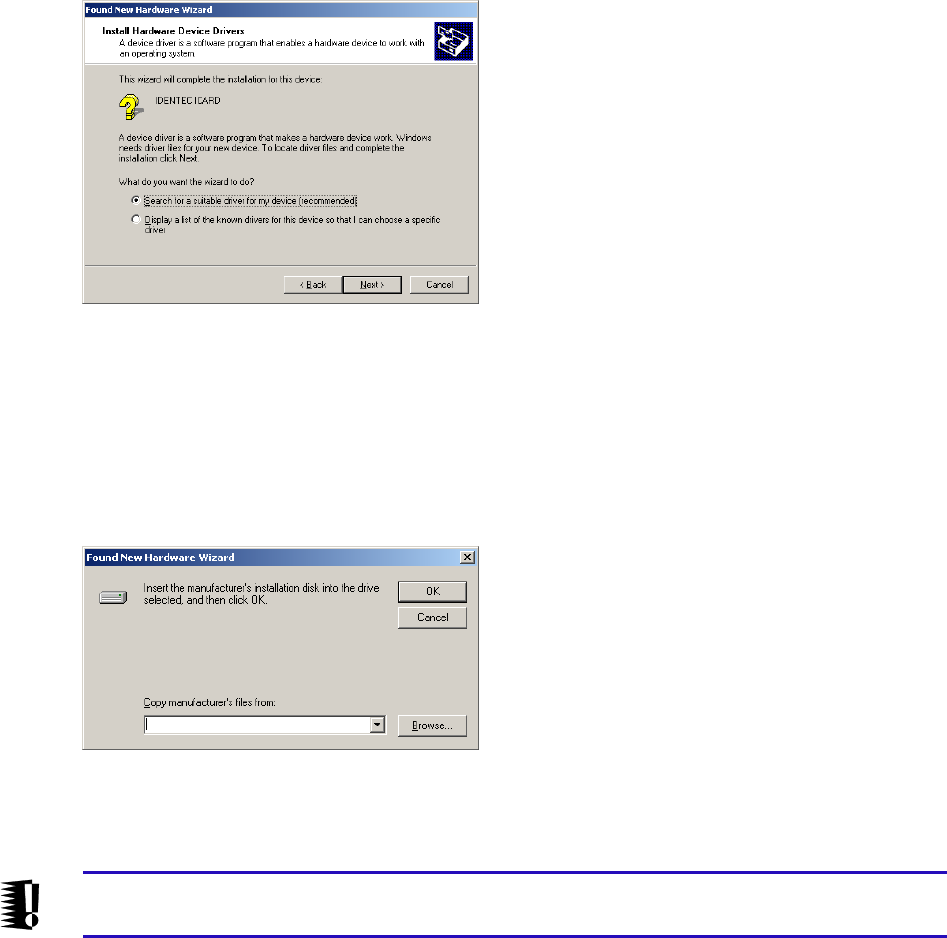
i-CARD User’s Guide
_____________________________________________________________________________________
Document # 7007-0001, Rev B - 8 –
3.2.2 Windows 98/ME
The following section describes how to install the device driver on Windows 98 and
Windows ME. When the i-CARD is inserted into the PC slot, an installation wizard
begins automatically and the following screen appears:
Select the Search for a suitable driver for my device option and click Next.
Selecting a search location depends on the type of ILR® Installation Disk you
received. If you received a floppy disk, the search location is the A: drive. If you
received a CD, the search location is the D: drive.
For a search location, select the Floppy Disk Drives option, and click Next. Click the
Browse button to copy drivers from your ILR® Installation Disk:
Using the Browse dialog box, select the \drivers\Windows 98 folder. Select the
i-CARD.inf file, then click OK.
Note: The driver used for Windows ME is the same as Windows 98 and is stored in
the subfolder Windows 98 on the ILR® Installation Disk.
The hardware driver is loaded and a confirmation screen appears. This screen
verifies that the installation has completed successfully. Click Next to complete the
installation.
The hardware driver installation is now complete.
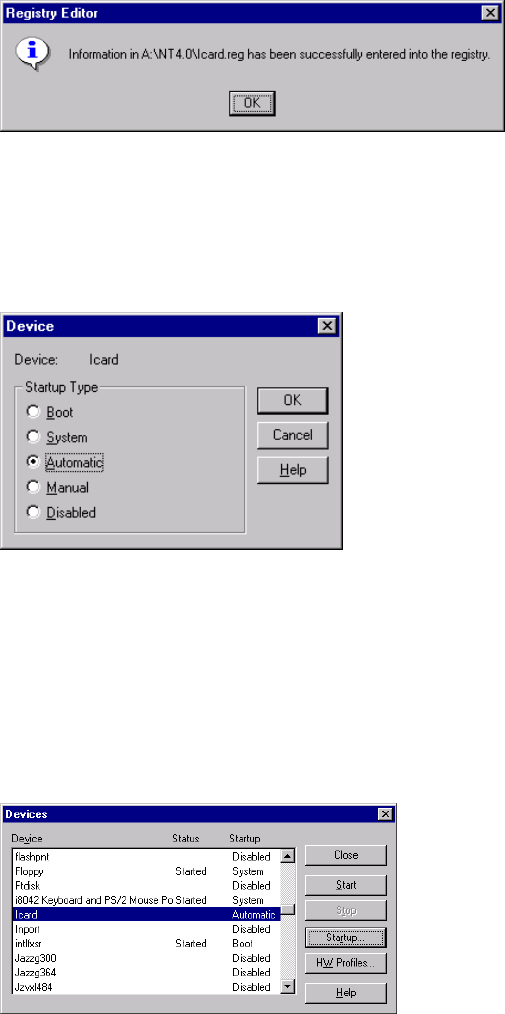
i-CARD User’s Guide
_____________________________________________________________________________________
Document # 7007-0001, Rev B - 9 –
3.2.3 Windows NT
To perform the following steps, administrator rights are required because you will
need to modify your machine’s registry.
On the ILR® Installation Disk, go to the \drivers\WindowsNT folder, and double-
click on the icard.reg file. The following dialogue box appears:
Click OK, then copy the icard.sys file from the \drivers\WindowsNT folder to the
\Winnt\system32\Drivers folder on the computer operating the i-CARD.
Remove the floppy disk and reboot the computer. The following screen appears
during startup:
Select the Startup Type of the i-CARD device. The Startup Type will vary from user
to user depending on the type of PCMCIA software installed. By default, Windows
NT does not support plug-and-play devices, therefore the Startup Type should be
set to Automatic. If you have additional software that permits plug-and-play
devices, then the Startup Type should be set to Manual.
If the above screen does not appear, go to Control PanelàDevices and select the
Icard device, click Startup, then click Close.
The hardware driver installation is now complete.
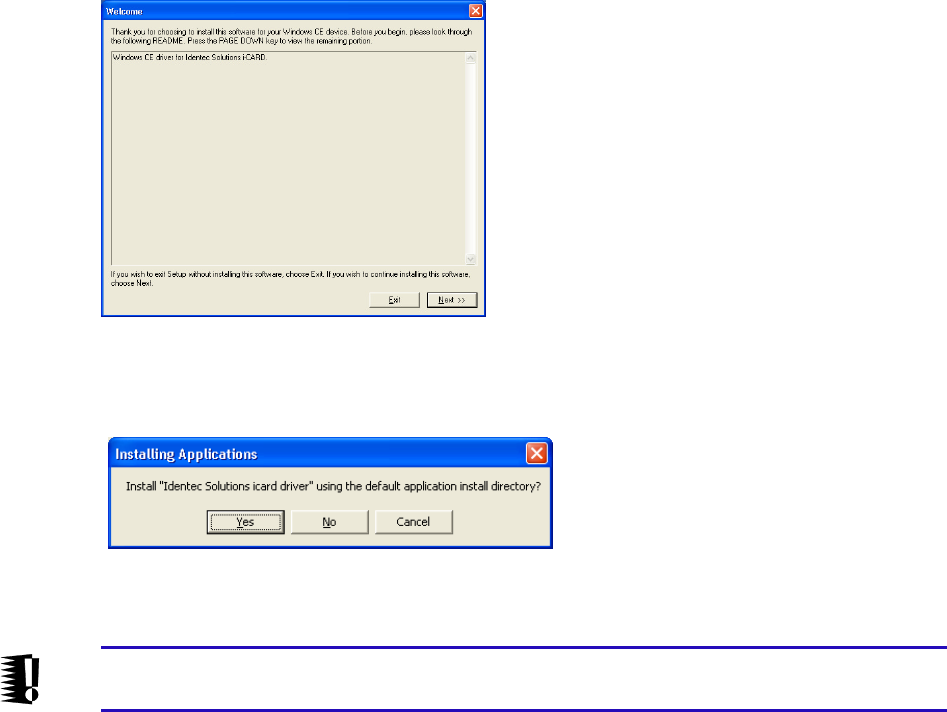
i-CARD User’s Guide
_____________________________________________________________________________________
Document # 7007-0001, Rev B - 10 –
3.2.4 Windows CE
Be sure that you have your handheld device in its cradle and that you have an
Active Sync session established between your PC and the Handheld. As this step
may vary depending on your Handheld, consult your Handheld user’s manual if you
require assistance in establishing an Active Sync session.
Determine whether your handheld device has a MIPS or StrongArm Processor and
select the appropriate folder.
• MIPS = Symbol 27xx series
• StrongArm= Symbol 28xx series, Symbol 81xx series, and Compaq i-PAQs
Select the setup.exe for your Processor type
icard_mips_setup.exe = MIPS Processor
icard_arm_setup.exe = StrongArm Processor
Double-click on the setup.exe and an installation wizard begins with the following
screen:
Select Next and follow the installation instructions. When the Default Directory
dialogue box appears, select Yes and continue the installation process.
Finally, you will be prompted to check your handheld device for additional
installation steps. These steps will vary depending on the handheld device used.
Note: When the installation is finished you must power off your handheld device
and power it back on to complete the driver initialization.
The hardware driver installation is now complete.
i-CARD User’s Guide
_____________________________________________________________________________________
Document # 7007-0001, Rev B - 11 –
4.0 Usage
After completing the i-CARD installation, please refer to the user’s guide of the
applicable software to continue with the system implementation.
The i-CARD can be used in conjunction with a variety of software applications,
such as i-DEMO, i-LINKS and other ILR® custom applications.
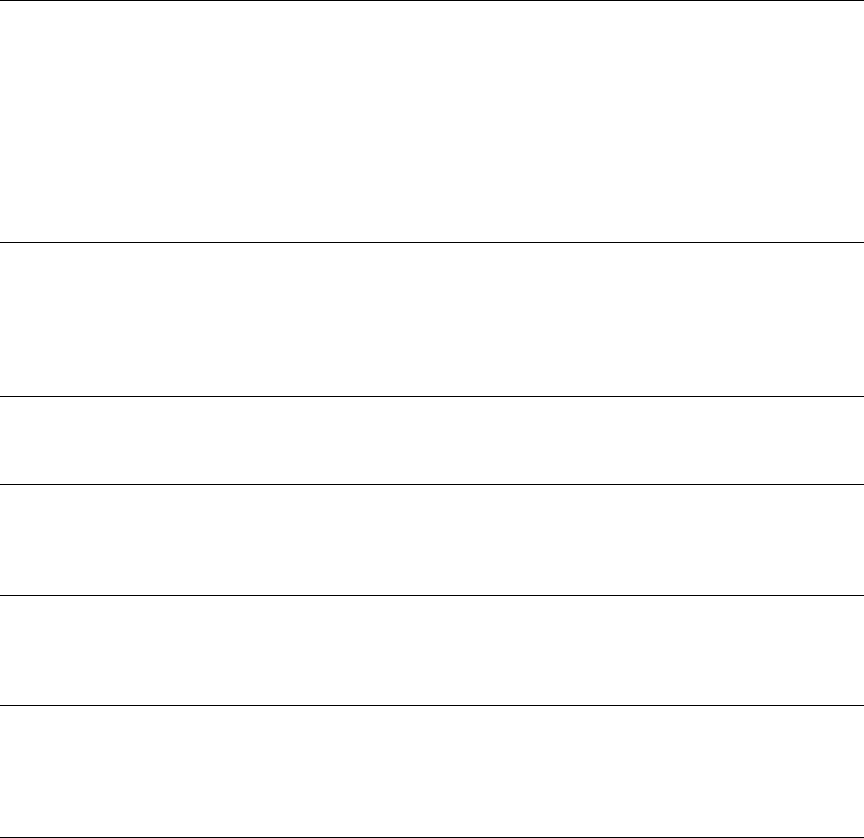
i-CARD User’s Guide
_____________________________________________________________________________________
Document # 7007-0001, Rev B - 12 –
Appendix A: Technical Specifications
Type II PC i-CARD
Compatibility
ILR® i-Q tags
Performance
Read range (adjustable) 10 m (33 ft)
Write range (adjustable) 10 m (33 ft)
Max. response time < 150 ms
Read rate (ID only) 100 tags/s
Read rate 35 tags/s @ 128 bit data reading
Multiple tag handling
Up to 2,000 tags in the read zone
Communication
Frequency 868 MHz (EC) or 915 MHz (NA) ISM Band
Certification EN 330 220 (EC); FCC part 15 (US); Industry Canada
Number of antennas 1
Output power Up to 0 dBm, digitally controlled (255 steps)
Sensitivity
Up to –80 dBm, digitally controlled (255 steps)
CPU
Hardware drivers for different O/S Windows NT/98/ME/2000/CE, PALM
Program memory
2 MB Flash
User Interfaces
Parallel interface PCMCIA
Option serial interface RS-232
Number of status indications
3 LEDs
Electrical
Input power 5 V DC
Power consumption 100 mW maximum
Standards / Safety
CE
Environmental
Operating temperature 0°C to +70°C (32ºF to +158ºF)
Option ext. temperature range –40°C to +80°C (–40ºF to +176ºF)
Storage temperature –40°C to +80°C (–40ºF to +176ºF)
Humidity
90% non-condensing
Physical
Dimensions Standard Type II PC Card
Enclosure Metal
Mass 32 grams (1.13 oz)
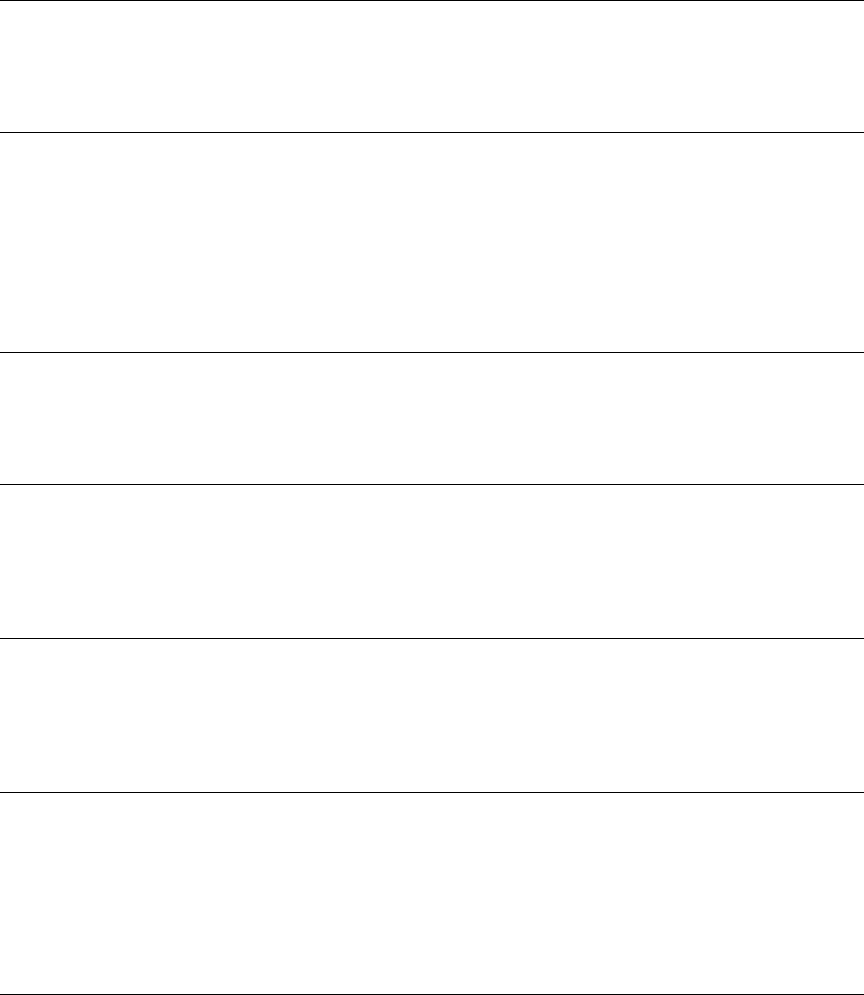
i-CARD User’s Guide
_____________________________________________________________________________________
Document # 7007-0001, Rev B - 13 –
Appendix A - Technical Specifications (con’t)
i-Q Series Tags
Performance
Read rate (ID only) Up to 100 tags/s
Read rate Up to 35 tags/s @ 128 bit data reading
Response time < 150 ms (single tag)
Multiple tag handling Up to 2,000 tags in the read zone
Communication
Read range to i-PORT II Up to 100 m (300 ft) @ free air
Operating frequency 868 MHz (EC) or 915 MHz (NA) ISM Band
Data rate
(download to tag)
115.2 kbits/s
Data rate
(upload to reader)
115.2 kbits/s
Maximum transmission power 0.75 mW ERP
Standards / Certification EN 330 220 (EC), FCC Part 15 (US), Industry Canada
Electrical
Power source Lithium battery (not replaceable)
Expected battery life 5 Years @ 600 times 128 bit readings/day
Battery monitoring Yes
Temperature logging
(Optional)
Number of samples 1,024 (i-Q8T) / 13,312 (i-Q32T)
Interval User-definable in intervals from 1 to 1000 minutes
Accuracy +/- 0.5°C over a range of –20°C to +50°C
+/- 1°F over a range of –4°F to +122°F
Resolution 0.25°C (0.5°F)
Data
Data retention >10 years without power
Write cycles 100,000 writes to a tag
Memory size 7,855 byte user-definable (i-Q8)
32,431 byte user-definable (i-Q32)
Identification code 48 bit fixed ID
Environmental
Operating temperature –40°C to +70°C (–40ºF to +158ºF)
Shock 50 G, 3 times DIN IEC 68-2-27
Multiple drops to concrete from 1 m (3 ft)
Vibration 3 G, 20 sine wave cycles, 5 Hz to 150 Hz,
DIN IEC 6
5 G, noise 5 Hz to 1000 Hz, 30 minutes
DIN IEC 68-2-64
Physical
Dimensions 131 mm x 28 mm x 21 mm
(5.2 in. x 1.1 in. x 0.85 in.)
Enclosure Plastic (ASA / Luran® 5)
Mass 50 g (1.75 ounces)
Enclosure rating IP 65 — Totally protected against dust and low-
pressure jets of water from all directions.

i-CARD User’s Guide
_____________________________________________________________________________________
Document # 7007-0001, Rev B - 14 –
Appendix B: RF Output Power Calculation
The following is the licensed limit allowable by the appropriate regulatory bodies for
operation of IDENTEC SOLUTIONS’ RFID devices:
In North America, the approved frequency is 916.5 MHz. Our equipment is certified to
transmit an Effective Radiated Power (ERP) of 50mV/m @ 3m. This equates to
transmitting 0.75mW from the antenna, or –1.25 dBm.
In Europe, the approved frequency is 868.35 MHz. Our equipment is certified to
transmit an ERP of 5mW (6.99dBm) @ 3m.
To calculate the power being transmitted from the antenna, the following formula may
be applied:
Effective Radiated Power (ERP) = [i-CARD Output Setting] - [Cable/Connector Loss] +
[Antenna Gain]
The variables are defined as follows:
[i-CARD Output Setting] = User defined
[Cable/Connector Loss] = Variable, depending on the type of cable and connectors
being used. A typical installation may use RG-58 cable with a loss of 0.2 dBm/ft.
Typical connector loss is around 0.5dB per junction
[Antenna Gain] = –2.15 dBm for our standard PC i-CARD antenna: P/N 210265-001
NOTE: It is the responsibility of the installer to ensure that operation is within the
limits of the appropriate regulatory body where the equipment is being used.